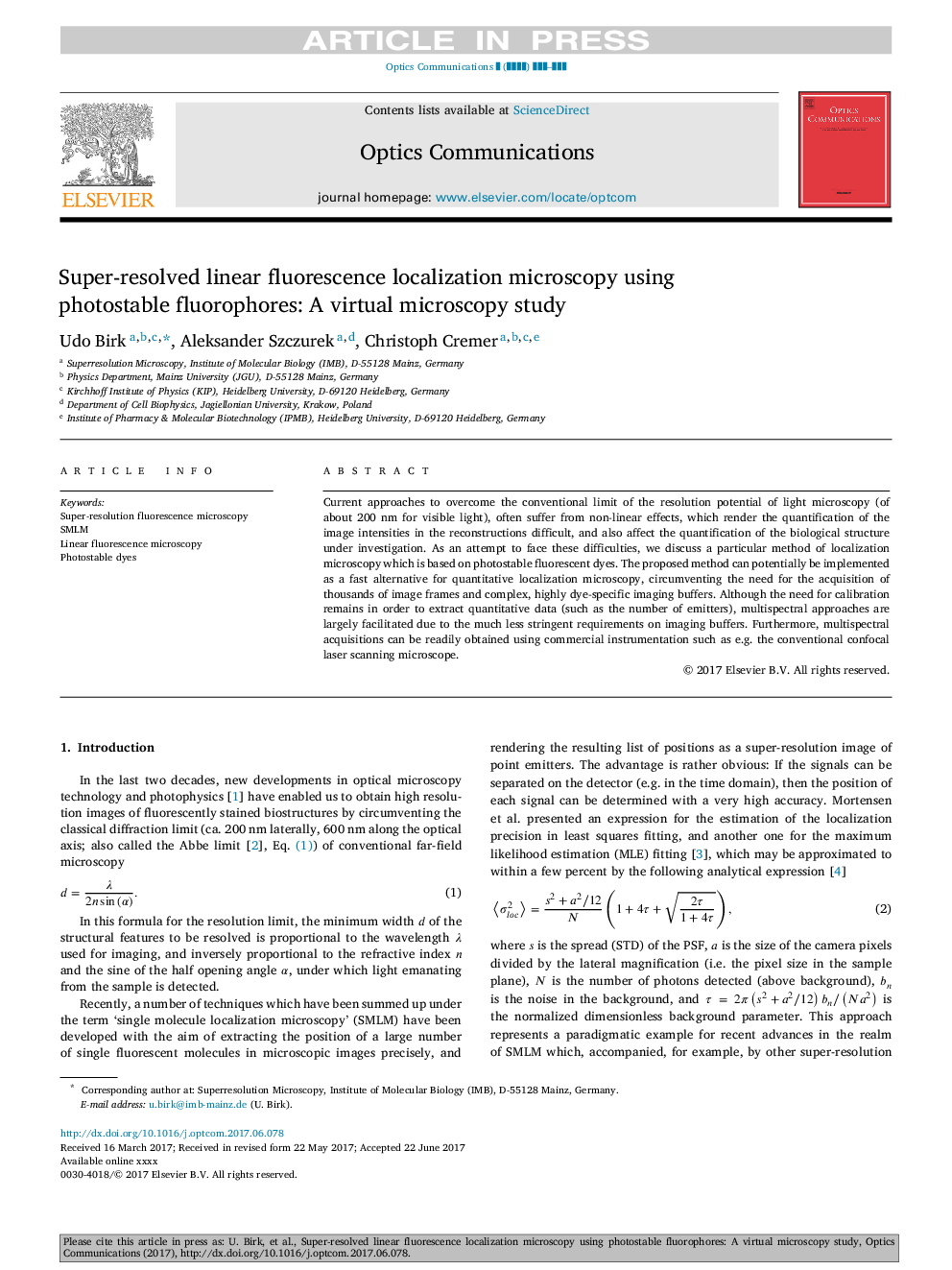| Article ID | Journal | Published Year | Pages | File Type |
|---|---|---|---|---|
| 5449001 | Optics Communications | 2017 | 9 Pages |
Abstract
Current approaches to overcome the conventional limit of the resolution potential of light microscopy (of about 200 nm for visible light), often suffer from non-linear effects, which render the quantification of the image intensities in the reconstructions difficult, and also affect the quantification of the biological structure under investigation. As an attempt to face these difficulties, we discuss a particular method of localization microscopy which is based on photostable fluorescent dyes. The proposed method can potentially be implemented as a fast alternative for quantitative localization microscopy, circumventing the need for the acquisition of thousands of image frames and complex, highly dye-specific imaging buffers. Although the need for calibration remains in order to extract quantitative data (such as the number of emitters), multispectral approaches are largely facilitated due to the much less stringent requirements on imaging buffers. Furthermore, multispectral acquisitions can be readily obtained using commercial instrumentation such as e.g. the conventional confocal laser scanning microscope.
Related Topics
Physical Sciences and Engineering
Materials Science
Electronic, Optical and Magnetic Materials
Authors
Udo Birk, Aleksander Szczurek, Christoph Cremer,
